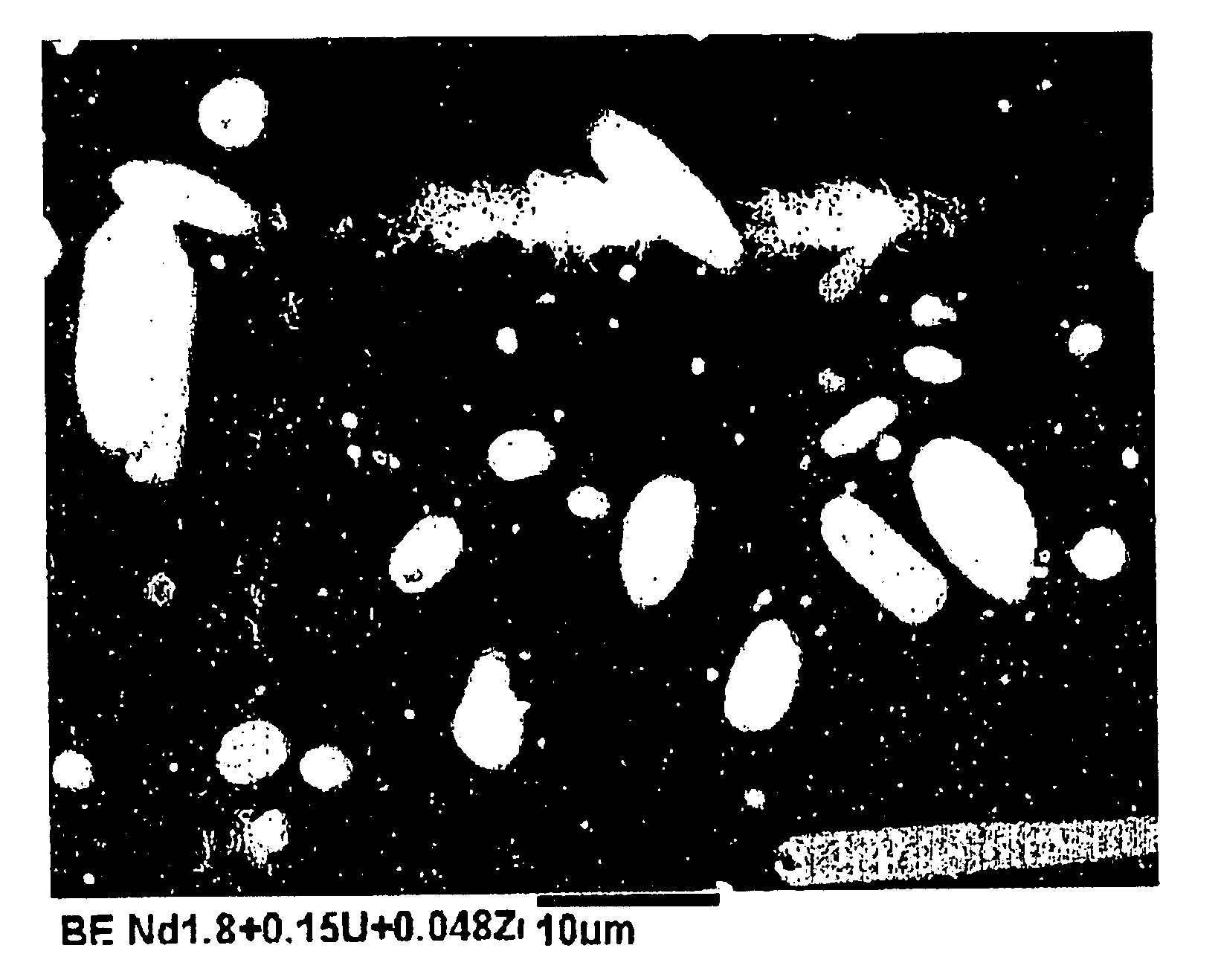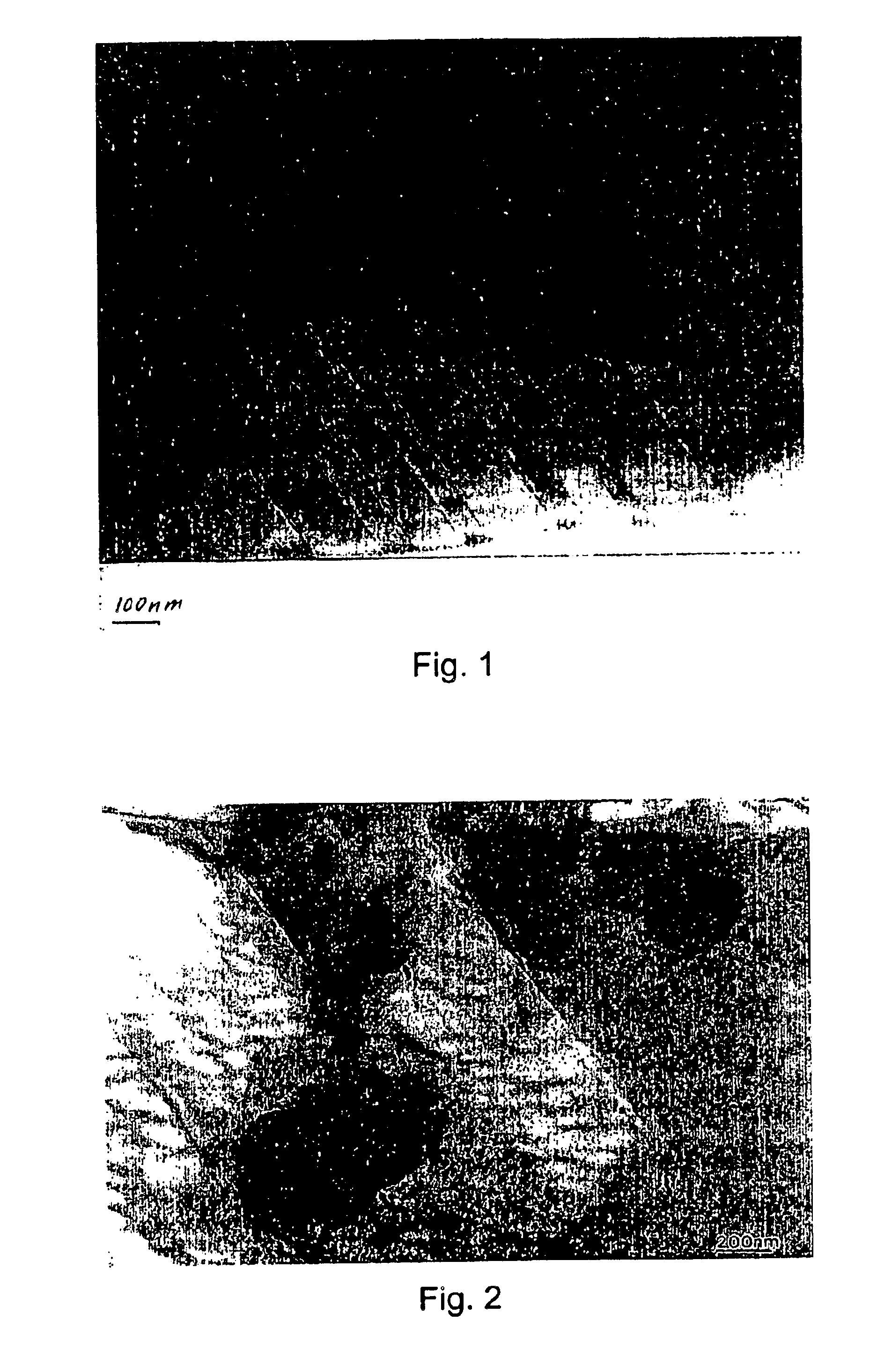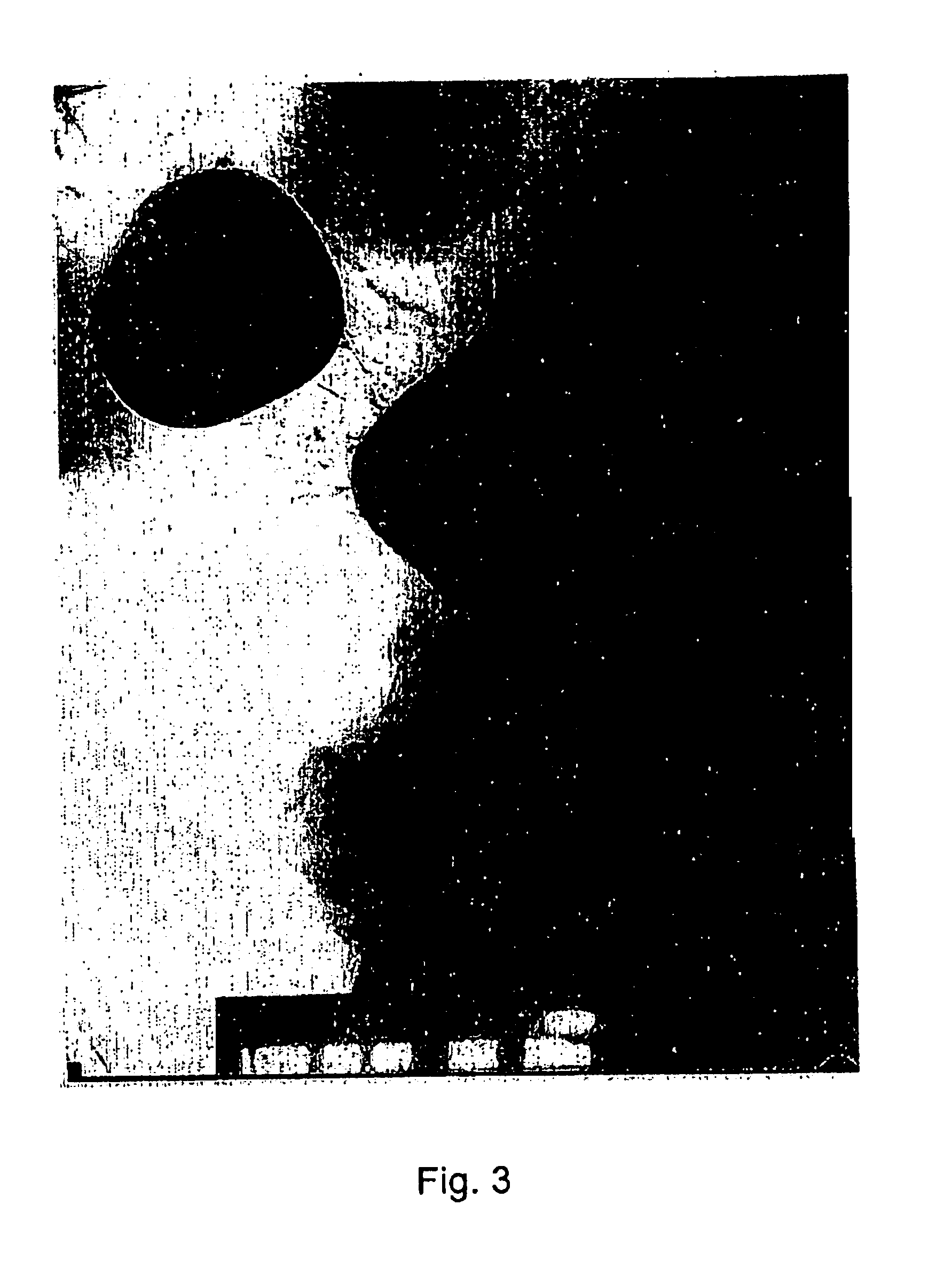Chemical pinning centers for high temperature superconductors
a superconductors and high temperature technology, applied in the direction of superconductor details, superconductor devices, capacitors, etc., can solve the problems of reducing the movement of fluxoids, allowing high critical currents, and “capturing” magnetic fields, etc., to achieve the effect of enhancing the reaction
- Summary
- Abstract
- Description
- Claims
- Application Information
AI Technical Summary
Benefits of technology
Problems solved by technology
Method used
Image
Examples
Embodiment Construction
In one preferred embodiment, 0.75% Pt by weight, and 0.44% W by weight, in the form of WO3, was added to a powder of YBa2Cu3O7−δ (Y123) plus 30% molar Y2BaCuO. These chemicals were mixed, and then ball milled for 72 hours. Cylindrical forms about 1 inch in diameter were filled with the mixed powders and compacted by a uniaxial press, using a force of 5,000-20,000 lbs. The mass of a sample compacted in this way is about 25 grams. A seed of Sm123 was implanted in the center of the top of the sample and the sample was placed in a programmable oven. The temperature was first increased to 925° C. and held there for 4.5 hours, in order to sinter the sample. Then the temperature was increased to 1025° C., to melt the powders, and held at this temperature for 1 hour. The temperature was then decreased at 1° C. per hour for 120 hours and then cooled to room temperature at 4° C. per hour. These samples were later characterized by trapped field measurement. During the slow cooling, clusters of...
PUM
| Property | Measurement | Unit |
|---|---|---|
| Size | aaaaa | aaaaa |
| Size | aaaaa | aaaaa |
| Size | aaaaa | aaaaa |
Abstract
Description
Claims
Application Information
 Login to View More
Login to View More - R&D
- Intellectual Property
- Life Sciences
- Materials
- Tech Scout
- Unparalleled Data Quality
- Higher Quality Content
- 60% Fewer Hallucinations
Browse by: Latest US Patents, China's latest patents, Technical Efficacy Thesaurus, Application Domain, Technology Topic, Popular Technical Reports.
© 2025 PatSnap. All rights reserved.Legal|Privacy policy|Modern Slavery Act Transparency Statement|Sitemap|About US| Contact US: help@patsnap.com



